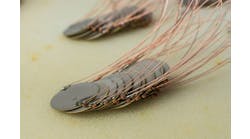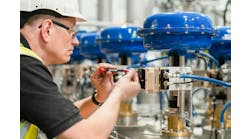Everything is smart now. The oncoming surge of the Industrial Internet of Things (IIoT) has created a new wave of smart devices and components that can’t get connected fast enough. And, while there’s a lot of potential value in data, some things are just better when they’re dumb.
However, the use of certain technology, such as pneumatics, can clearly benefit from connectivity and data analytics. Although preferable to hydraulic solutions for most factory-automation applications, pneumatics have been slowly losing ground to electromechanical components. Variable-speed motion control and energy consumption have traditionally been shortcomings for pneumatics. But smart pneumatic cylinders, valves and actuators can help to improve reliability and optimize performance.
In a pneumatic cylinder, compressed air acts on a piston to move a load. Research from Market Insights Reports indicates the pneumatic cylinder industry, for instance, is relatively concentrated. About half of the global market is held by a handful of manufacturers, notably SMC, Festo, IMI, Parker and Aventics. SMC holds almost 17% market share, with Festo at 12%. Other companies mentioned include Bimba Manufacturing, EMC, Aro (Ingersoll Rand), Emerson, Univer, Camozzi, Metal Work, Airtac, Ashun Fluid Power, Bansbach and Aignep.
According to the report, the global consumption of pneumatic cylinders has seen an average annual growth rate of more than 5%, and that’s expected to continue over the next five years. Global sales of pneumatic cylinders has climbed from $837 million to $962 million, largely due to growing demand in east Asia, but Europe is still the largest producer (32%) and consumer (26%) of pneumatic cylinders.
The benefits offered by pneumatic cylinders over hydraulic cylinders are the major drivers, according to the report. Rapid movement, cleanliness and ease of maintenance continue to propel pneumatic cylinders over hydraulic cylinders.
Yet the report cites electromechanical equipment’s surging substitution for pneumatics over the past few years because of environmental concerns and energy costs.
Connectivity could even that playing field. Smart devices and components are here to stay. This IIoT thing isn’t a fad, and its days of pie-in-the-sky fantasy have been grounded by example after example of companies changing their business models because of enhanced data analytics, whether at the edge or in the cloud, and what it enables. The savvy machine builder will use data to optimize actuation.






